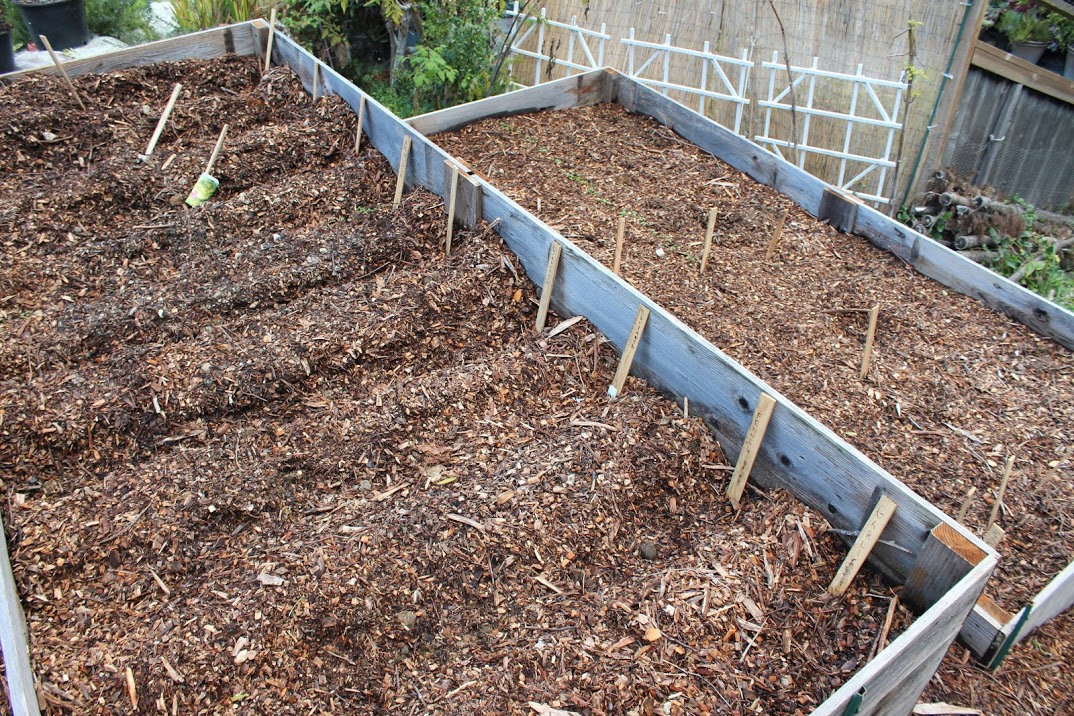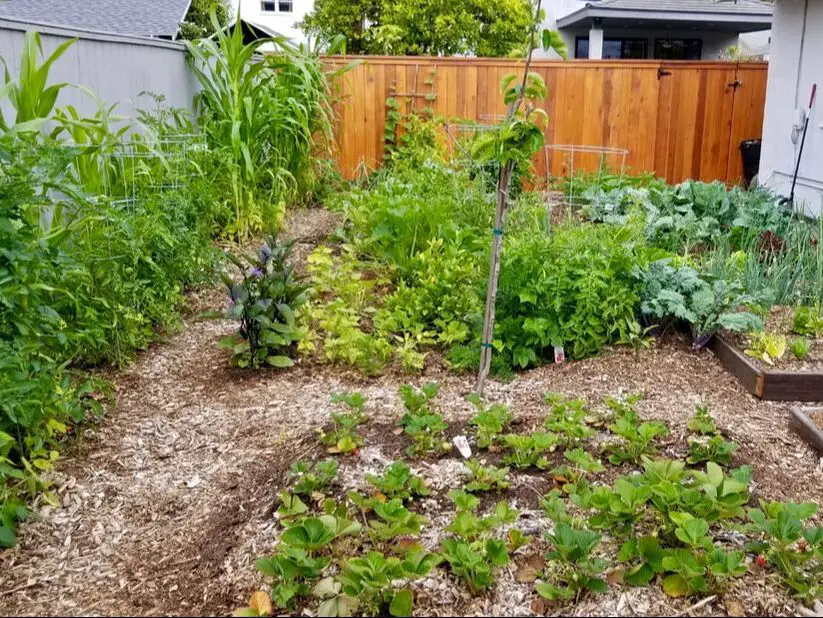Back to Eden gardening has gained widespread attention from a documentary film that showcased Paul Gautschi’s revolutionary gardening method, inspired by woodland environments where leaves, twigs and branches form dense layers that become rich soil without human interference! Back to Eden is an approach similar to this that takes its inspiration from woodland environments where dense layers of leaves, twigs and branches cover densely packed soil – eventually providing abundantly fertile ground that doesn’t require human labor!
1. Choose Your Location
Back to Eden gardening is an easy and natural way of growing vegetables, fruits and herbs in small gardens or large farms alike. Requiring minimal space and no tilling for growth, Back to Eden gardening works perfectly as a natural alternative for those wanting to reduce chemical fertilizer use.
Step one of creating a Back to Eden garden is preparing the area and gathering materials. Soil doesn’t need to be cleared or tilled, just free from weeds. Additionally, loose soil should allow adequate drainage.
At first, lay down a layer of newspaper or light cardboard to prevent weeds from sprouting and is easily removable once plants have become established. Next, add compost; this could be homemade mushroom compost, store-bought compost or anything that suits your garden size; the amount needed will depend on its size but aim for three to four inches deep layer for best results.
Add a layer of wood chips from different trees – such as maples and oaks – as this will provide your soil with additional nutrition. Eucalyptus wood chips should be avoided since their oil can impede plant growth. Over time, these will eventually decompose and become rich compost for your garden.
As chips and leaves decompose, they provide vital nutrients for your plants while simultaneously controlling weeds. Furthermore, using mulch will prevent water from splashing onto them during rain or watering sessions, potentially spreading fungal diseases to them.
Back to Eden gardens may still need some weeding, although much less so than bare ground. Weeds will likely appear less frequently and be easier to manage once they appear.
No matter your reservations about Back to Eden gardening methods, they remain an effective method. Many have discovered it as an efficient means of producing food while offering an alternative to chemical solutions.
2. Get Your Materials Ready
Back to Eden is a gardening method popularized by Paul Gautschi, an arborist and devout Christian. His Back to Eden gardening technique draws on his belief that Eden was an abundant and self-sustenance garden; therefore he devised this no-till method that uses layers of wood chips to feed soil while simultaneously keeping out weeds from sprouting up – all for just $20 with amazing results!
Before beginning to establish a Back to Eden garden, it’s essential that all necessary materials are available. Newspaper or plain cardboard makes for an effective first layer of mulch; layer five to six sheets deeply over an overlapping space until there are no gaps left between sheets; this allows weeds and grasses to pass through more easily so make sure you apply an herbicide first before moving on with covering layers of material.
The second layer should consist of a generous spread of compost. Whether homemade or store-bought organic compost is appropriate; just be sure that it sits and breaks down for several months prior to applying it to your garden; this will help ensure you don’t add too much nitrogen that could burn plants in your plot.
Once the compost has been applied, layer a layer of wood chips over it. As this layer will form the backbone of your Back to Eden garden, be sure to only use high-quality chips that have fully decomposed; any that contain cedar or treated wood should also be avoided.
Mulch will help keep weeds down while providing extra moisture for your plants, thus decreasing watering needs. But this doesn’t mean you won’t ever need to water again; depending on weather and rainfall patterns, additional irrigation may still be required from time to time.
One of the greatest misconceptions of Back to Eden gardens is that they don’t require fertilizing. While they do help prevent weeds, this natural mulch will still leach nutrients out of the soil over time; therefore it is vitally important to conduct a soil test to ascertain if your plants need additional manmade fertilizers.

3. Start Layering
Starting a Back to Eden garden requires clearing an area of the ground and removing anything that will hinder its creation. You do not have to completely clear or till your soil as layers will cover any imperfections such as grass clumps or rocks in it.
Next, lay a layer of newspaper or light cardboard down. This will prevent any weeds from taking hold in your new garden bed while adding nutrients-rich mulch into the mix.
Once the paper or light cardboard has been laid down, cover it with wood chips or another type of mulch to help keep weeds at bay while providing your plants with much-needed carbon rich soil nutrients. Furthermore, mulch provides soil protection from sun and wind exposure thereby helping maintain moisture balance within your garden.
If you plan on using raw wood chips as part of your garden ecosystem, it is wise to let them sit over the winter so that they can begin decomposition in preparation for spring/summer fertilization with organic manure. Doing this will reduce work later.
Many people worry that wood chips will bind up nitrogen in the soil. When used correctly, however, wood chips will actually release this nitrogen back into the environment as they break down, providing it to plants in your garden and making more available than before.
Concerns have been expressed that the Back to Eden method will not work effectively in cold climates. Paul Gautschi details in his book how his orchard has not needed watering in 17 years; furthermore, Paul Gautschi conducted soil tests that demonstrated his trees are receiving all their essential nutrients naturally without commercial fertilizers or pesticides being applied; in fact, their garden’s soil had even more micronutrients than any of its neighbors’ gardens!
4. Start Planting
Back to Eden gardening method follows nature. In a forest, fallen branches land on the ground and decompose, producing carbon layers which build rich, fertile soil that brims with life. No one tills this land yet it produces abundant nourishment that supports life!
Back to Eden seeks to resemble this process by applying mulch layers directly on top of soil surface. Instead of tilling soil directly, this approach uses organic material layers as layers of natural compost that enrich and loosen it gradually without actually touching it directly – something known as sheet composting – which works wonderfully when done right. When adding materials for sheet composting it is key that enough airflow, light, and space for microbes within soil survive without too much acidic material in your mulch, which could compromise them over time.
Once your sheet compost has become established in your garden, it’s time to plant crops. The mulch will help control weeds while supporting plant growth; plus it reduces rain- and watering-induced splashback which spreads fungal diseases; it retains moisture in the soil so frequent watering needs will decrease due to less frequent irrigation needs.
Many gardeners who utilize this approach find they need less watering, and their plants appear healthier than in traditional gardens. Furthermore, fertilizing requirements decrease significantly since organic material in mulch holds many of the essential nutrients required for plant growth.
Some individuals have discovered that Back to Eden gardening doesn’t work for them due to a lack of understanding. Perhaps they are using materials which won’t break down as planned or are neglecting to give the soil enough time for recuperation and enrichment.
If you’re curious to give this method a try, there are numerous resources online to assist with starting. Wood chip suppliers and recycling centers may supply free or inexpensive mulch; compost companies or farm manures are other resources which may also supply free or inexpensive mulch options.

